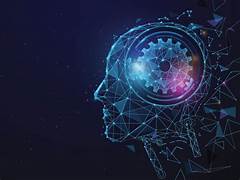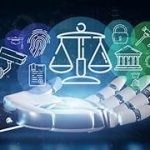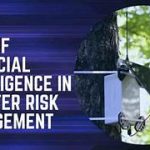The Challenges of Bias in AI Facial Recognition Technology
Artificial Intelligence (AI) has revolutionized numerous industries, and facial recognition technology is among its most prominent applications. From unlocking smartphones to enhancing security measures, facial recognition systems have become integral to modern life. However, this technology is not without its flaws. Bias in AI facial recognition poses significant challenges, with profound implications for ethics, privacy, and social equality. This article delves into the origins of bias in facial recognition, its societal impact, and potential strategies to address these issues.
Understanding Bias in AI Facial Recognition
Bias in AI facial recognition refers to systematic inaccuracies in the technology’s performance, often stemming from the data and algorithms used in its development. These biases typically manifest as disproportionate error rates across different demographic groups, such as race, gender, or age.
1. Origins of Bias
- Data Imbalance: AI models are trained on vast datasets, and the quality of these datasets directly impacts performance. If training data lacks diversity—for instance, an overrepresentation of certain ethnic groups—the system may struggle to accurately identify underrepresented groups.
- Algorithm Design: Developers may inadvertently embed biases into algorithms due to assumptions or design choices that favor certain characteristics over others.
- Historical Bias: Existing societal biases may seep into training data, perpetuating inequalities in AI outputs.
2. Types of Bias
- Demographic Bias: Higher error rates for specific racial or gender groups.
- Cultural Bias: Poor performance when identifying individuals from diverse cultural backgrounds.
- Application Bias: Disparities in how facial recognition systems are implemented, often favoring one use case over others.
Societal Implications of Biased Facial Recognition
The repercussions of bias in facial recognition extend beyond technical inaccuracies, affecting real-world applications and societal structures.
1. Inequities in Law Enforcement
Facial recognition is increasingly used in law enforcement to identify suspects and prevent crime. However, biased systems can lead to:
- False Positives: Misidentification of individuals, disproportionately affecting minority groups.
- Unjust Surveillance: Targeting specific communities, exacerbating existing inequalities.
- Erosion of Trust: Public confidence in law enforcement may decline when biased technologies are perceived as discriminatory.
2. Discrimination in Employment and Services
Facial recognition is employed in recruitment, customer verification, and access control. Biased systems can inadvertently:
- Deny job opportunities to certain groups.
- Restrict access to financial services.
- Reinforce systemic barriers to equality.
3. Privacy Concerns
Bias amplifies privacy risks, as marginalized communities may face disproportionate surveillance. This raises critical questions about consent, data protection, and the balance between security and individual rights.
4. Psychological Impact
The knowledge of being misidentified or disproportionately monitored can lead to stress, anxiety, and a sense of exclusion among affected individuals.
Addressing Bias in Facial Recognition Technology
Tackling bias in facial recognition requires a multifaceted approach involving technical, regulatory, and societal interventions.
1. Improving Data Quality
- Diverse Datasets: Ensuring datasets include balanced representation of demographics.
- Data Audits: Regularly reviewing datasets for biases and correcting imbalances.
- Synthetic Data: Generating artificial yet representative data to fill gaps in real-world datasets.
2. Algorithmic Enhancements
- Bias Testing: Incorporating fairness metrics into development pipelines to identify and mitigate bias.
- Explainable AI: Designing algorithms that provide transparency in decision-making processes.
- Iterative Improvements: Continuously refining algorithms based on real-world feedback.
3. Regulatory Oversight
- Ethical Guidelines: Establishing standards for fairness, accountability, and transparency in AI development.
- Legislation: Enacting laws that regulate the use of facial recognition and penalize biased implementations.
- Independent Audits: Mandating third-party evaluations of facial recognition systems.
4. Promoting Inclusivity
- Community Engagement: Involving diverse stakeholders in AI development and decision-making processes.
- Educational Initiatives: Training developers and policymakers on the importance of addressing bias.
- Collaborative Research: Encouraging partnerships between academia, industry, and advocacy groups.
5. Ethical AI Development
- Emphasizing ethical principles in AI research, prioritizing fairness and inclusivity over rapid deployment.
- Establishing accountability frameworks to hold developers and organizations responsible for biased outcomes.
The Future of Facial Recognition Technology
The road to unbiased facial recognition is challenging but achievable. Emerging trends and innovations offer hope for more equitable applications:
1. AI for Bias Detection
Using AI to identify and rectify biases in datasets and algorithms.
2. Decentralized Models
Developing facial recognition systems that prioritize user privacy and minimize centralized data collection.
3. Global Standards
Collaborating on international frameworks to ensure fairness and consistency across borders.
4. Public Awareness
Raising awareness about the challenges of biased facial recognition can drive demand for ethical solutions and foster informed public discourse.
Conclusion
Bias in AI facial recognition technology presents significant ethical, social, and technical challenges. Its impact is far-reaching, influencing law enforcement practices, societal equality, and individual privacy. Addressing these issues requires a concerted effort from developers, regulators, and society at large. By prioritizing fairness, transparency, and inclusivity, we can harness the potential of facial recognition technology while minimizing its harms. The journey toward unbiased AI is a crucial step in ensuring that technological advancements serve all members of society equitably and responsibly.


